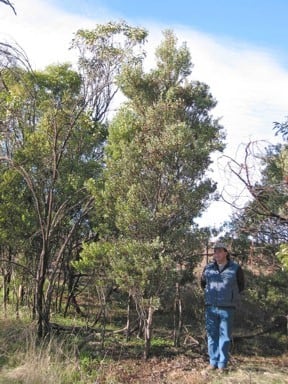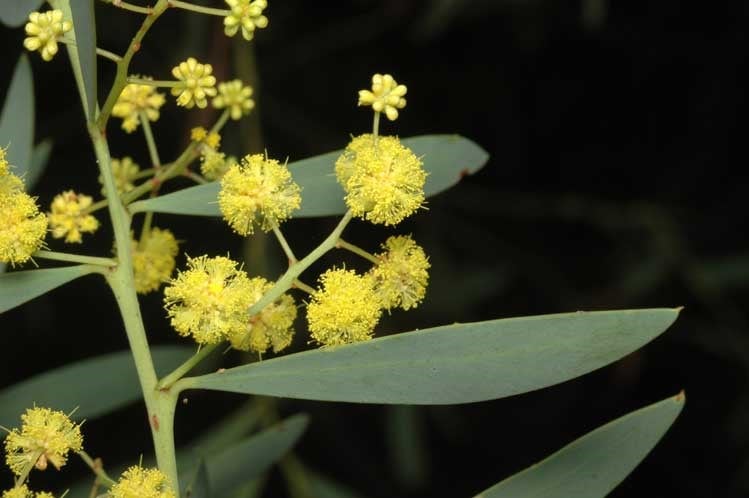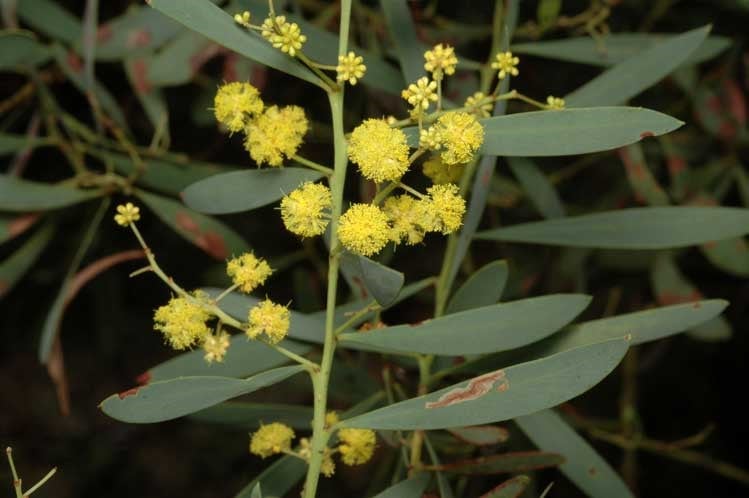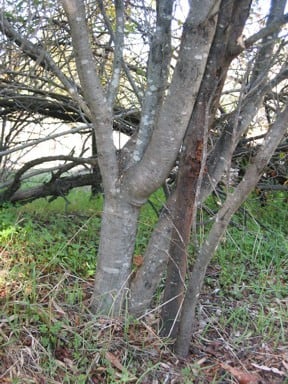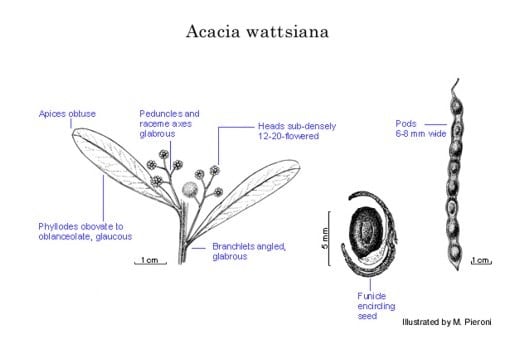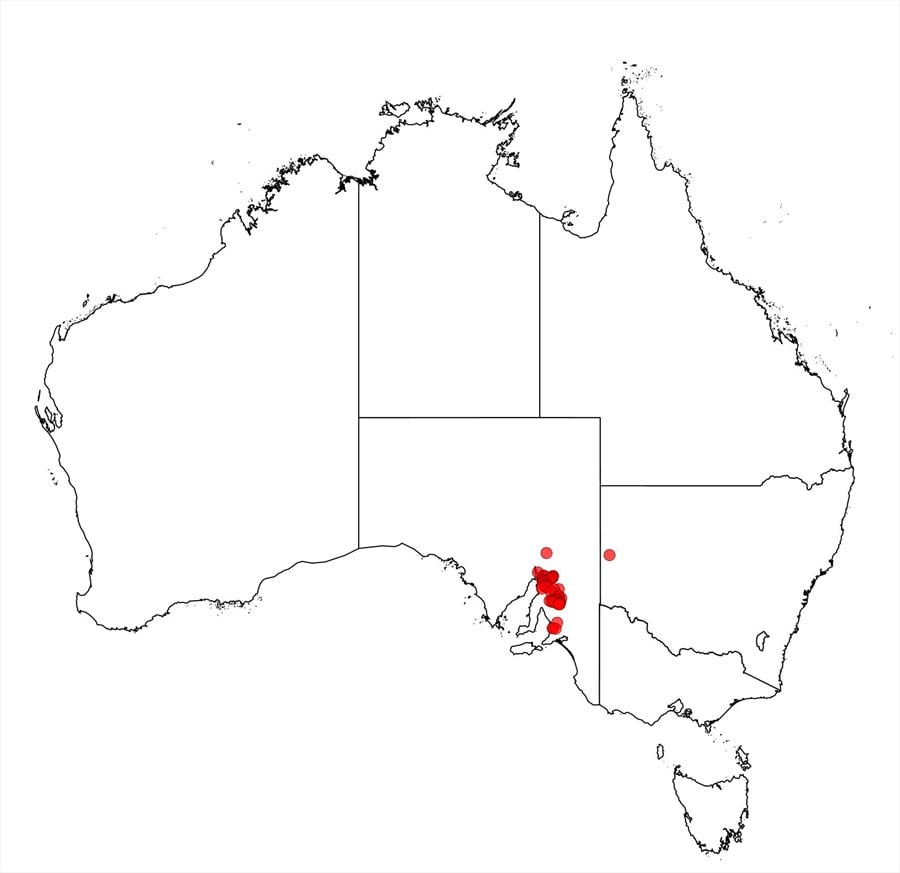Acacia wattsiana F.Muell. ex Benth.
WATTLE
Acacias of Australia
Common Name
Watt’s Wattle, Dog Wattle
Family
Fabaceae
Distribution
Restricted to the Clare and Gladstone areas, North Mt Lofty Ra., S.A.
Description
Shrub or tree 1–4 m high, obconic with a spreading, rounded, bushy crown, normally multi-stemmed. Branchlets acutely angled at extremities, reddish brown, glabrous. Phyllodes mostly obovate to narrowly oblanceolate, 3–7 cm long, mostly 5–12 mm wide, narrowed at base, rounded-obtuse, thinly coriaceous, glaucous, light green when young, glabrous; midrib slightly excentric; lateral nerves obscure; gland not prominent, 5–16 mm above pulvinus. Inflorescences racemose; raceme axes 10–25 mm long, glabrous; peduncles 3–9 mm long, slender, glabrous; heads globular, subdensely 12–20-flowered, yellow; buds obtuse. Flowers 5-merous; sepals united almost to their apices. Pods linear to narrowly oblong, to 9 cm long, 6–8 mm wide, firmly chartaceous to thinly coriaceous, glabrous. Seeds longitudinal, oblong to elliptic, c. 4.5 mm long, slightly shiny, dark brown to black; funicle encircling seed in a double fold, brittle, dark reddish to black; aril clavate.
Habitat
Grows in calcareous clay in woodland, open forest or tussock grassland.
Specimens
S.A.: World’s End Ck, R.Bates 3321 (AD); c. 10 km W of Gladstone, B.Copley 2905 & 2906 (both AD); 5 km W of Tandowie on road to Wirrabara State Forest, B.R.Maslin 5998 (AD, MEXU, PERTH).
Notes
The variant of uncertain rank noted under A. wattsiana, B.R.Maslin in Fl. Australia 11A: 267 (2001) is now described as A. spooneri.
Information on the biological and ecological features, and the utilisation potential, of this species is given in B.R.Maslin and M.W.McDonald, AcaciaSearch: Evaluation of Acacia as a woody crop option for southern Australia, RIRDC Publication No. 03/017, 228–231 (2004).
A member of the ‘A. microbotrya group’, related to A. quornensis and A. spooneri. Acacia deuteroneura (Qld) has similar phyllodes to those of A. wattsiana except that they are 2-nerved; it is further distinguished by its pruinose branchlets, transverse seeds and pods 12–13 mm wide. Closely resembling A. chalkeri (N.S.W.) which differs in mucronulate phyllodes and more densely flowered heads: the relationship between these two species should be reassessed.
FOA Reference
Data derived from Flora of Australia Volumes 11A (2001), 11B (2001) and 12 (1998), products of ABRS, ©Commonwealth of Australia
Author
Minor edits by B.R.Maslin & J.Reid
B.R.Maslin
This identification key and fact sheets are available as a mobile application:
URL: https://apps.lucidcentral.org/wattle/
© Copyright 2018. All rights reserved.

